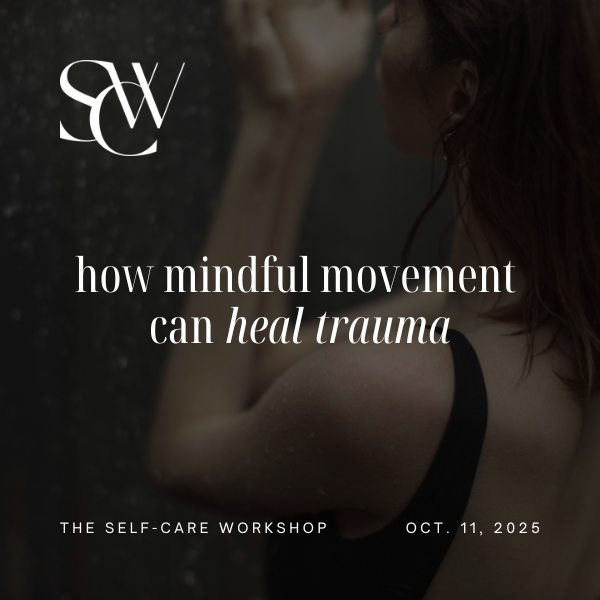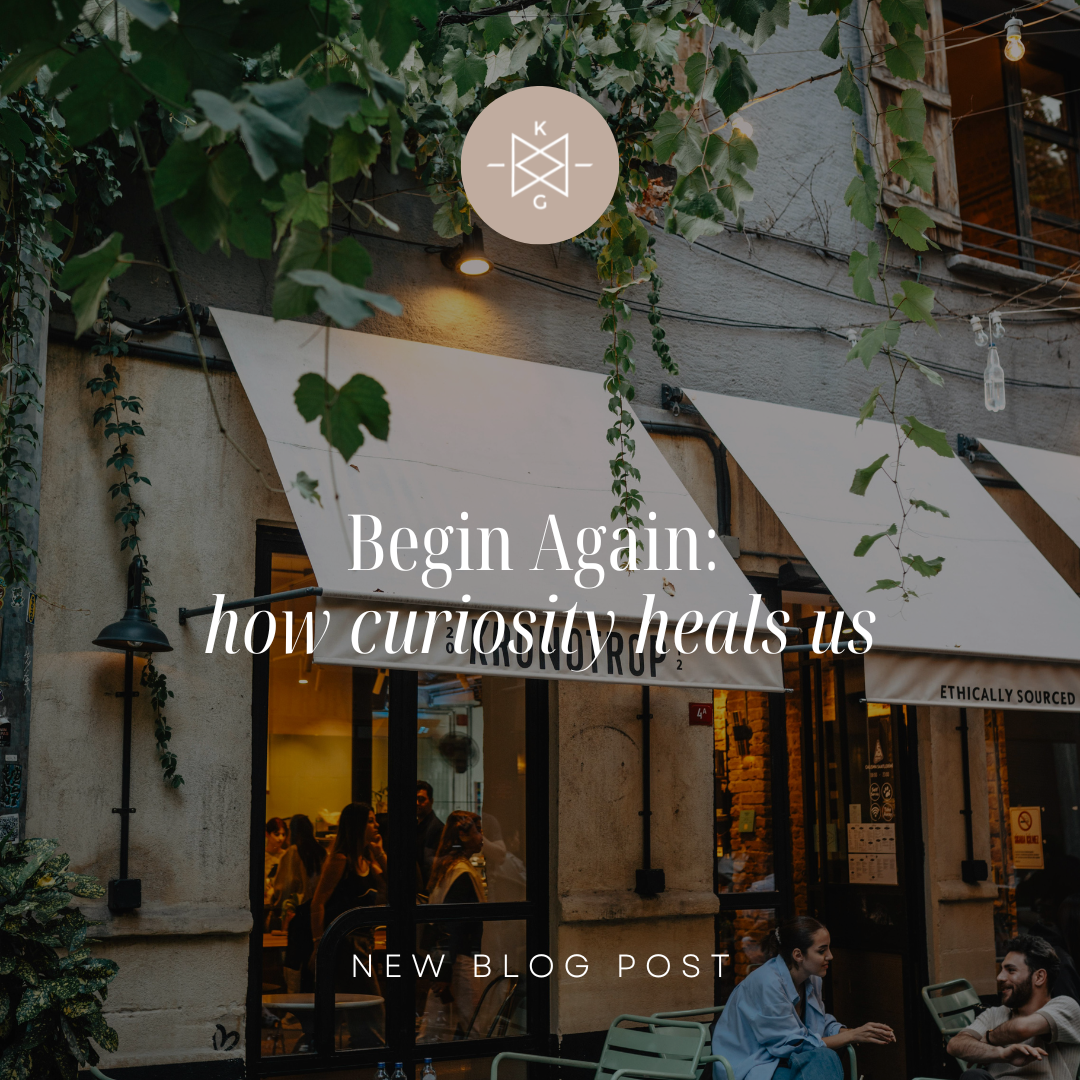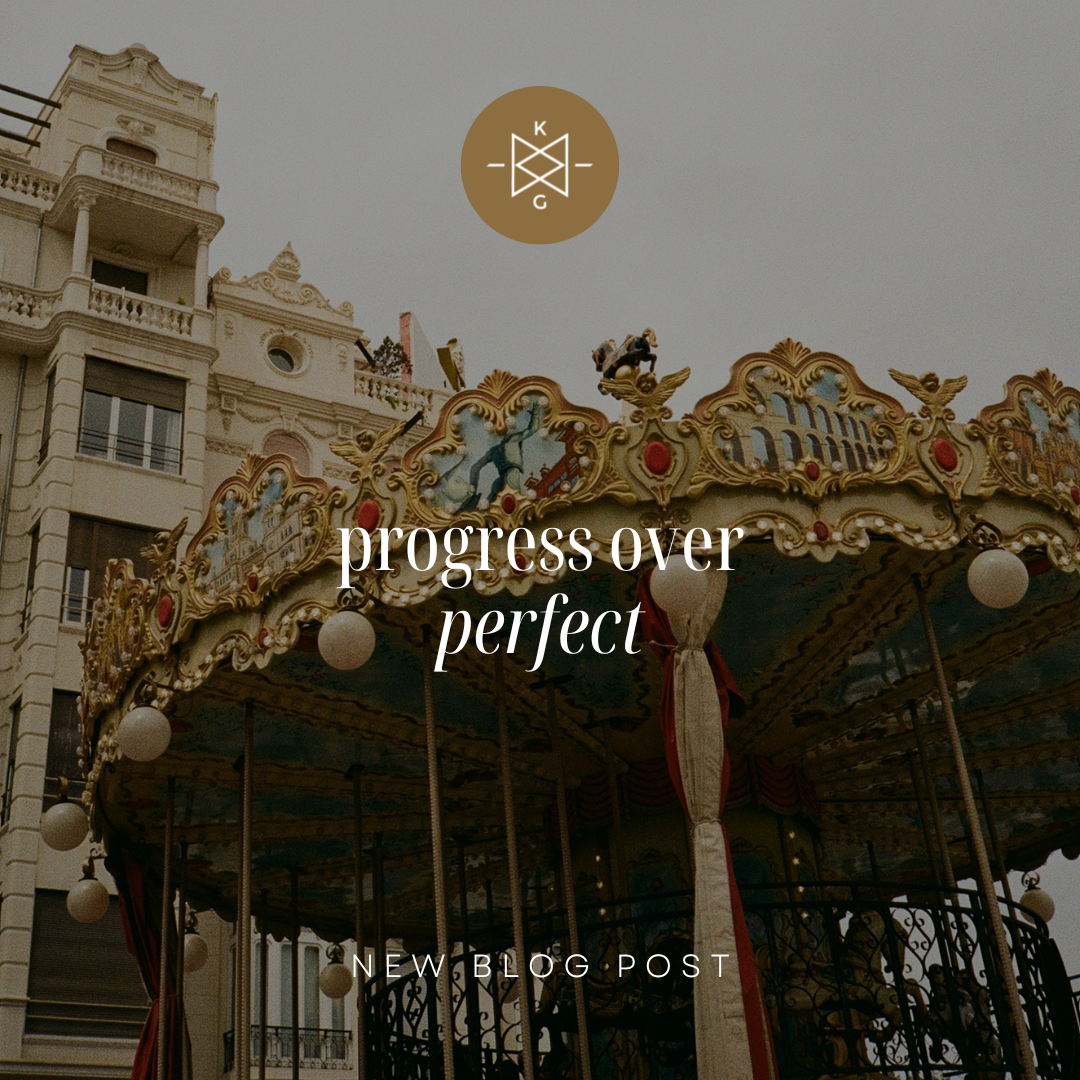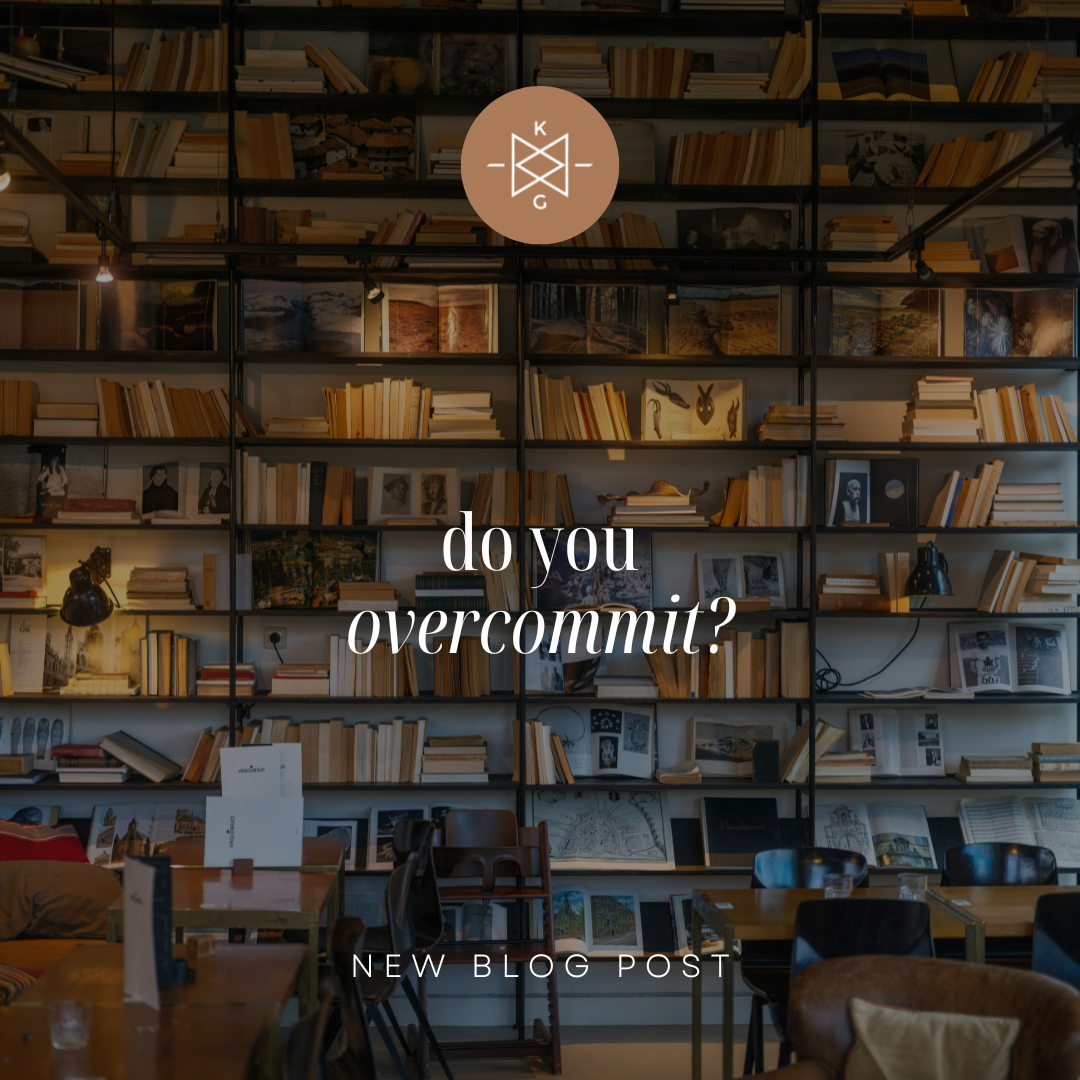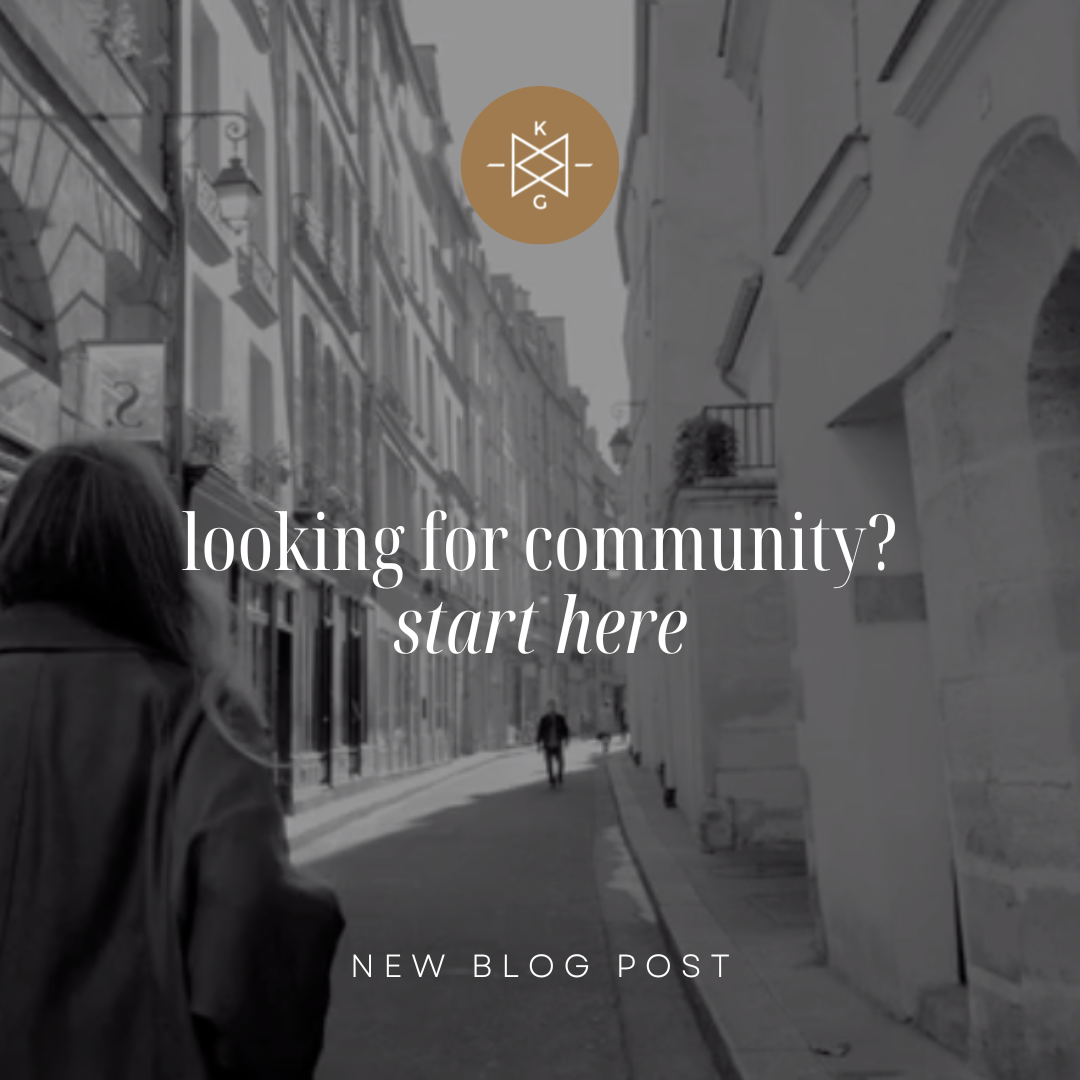
The Blog
Recently Featured
All Blogs
Palate Cleanser
"The visionary starts with a clean sheet of paper, and re-imagines the world.”
Malcolm Gladwell
Happy New Year!
We’re doing it! We’re about to cross over the threshold of 2025, showing up for ourselves all along the way. Time is a totally different beast after journeying through cancer treatment and recovery these past 3 years. I don’t take a single day for granted. I also cherish you, my community, and family more than ever. After what felt like my whole world being swallowed up by health for those last several years, it’s been truly amazing to have more presence as a mom, a wife, a friend, and a therapist.
So, 2025 marks some welcomed endings and exciting beginnings!
That said, there’s always the temptation to bite off more than we can commit to when considering New Year’s resolutions. Like I’ve said before, I’m convinced humans choose extremes over balance more days than not. We go all in, sink or swim, only to wake up a week later in too deep and gasping for air.
So let’s ease into it. Let’s hit the palate cleanse. Let’s listen to the gentle rhythms of our desires, our longings, our needs. Let’s partner with ourselves from a place of self-compassion, like we would a loved one we believe in and want to support. Let’s speak to ourselves with kindness and curiosity, turning down that harsh inner critic that keeps us small and hustling for worthiness. Let’s breathe more—slower and deeper than usual. I’m convinced we could all use a return to the breath and the body as a way of being present.
Let’s start small. And from that place of stillness and silence, we begin to etch out the tiny, two-degree shifts of growth and expansion that over time, create big breakthroughs. It’s often helpful to partner with a professional in order to gain greater support and accountability. If you’re looking to use the Enneagram as a part of your 2025 self-development, I’d love to help make that happen. You’re the expert at you, and I’ve got a detailed roadmap to get you from where you feel stuck to where you long to be.
No matter what you want to create in your life this year, I hope you’ll continue to journey with me. I’ve got some exciting stuff coming your way that I can’t wait to share.
In the meantime, do a little dreaming…a little playing. It’s time to let your true self take the wheel. She’s ready!
A Christmas Letter to You
“Just remember the true spirit of Christmas lies in your heart.”
-The Polar Express
I have a hunch you have a lot going on this week. With Christmas tomorrow and New Years just around the bend, many of us are traveling, gathering, and hopefully…connecting.
I’m reminded of how lonely this time of year can be as well. I’ve had many seasons of life where the holidays were, very truly, bleak. So I can’t help but write you today and check in. As an Enneagram type 4, that sensitive ache is never too far off, for better or worse. I say yes to the ache, though. Without it, I forget how fragile and thin life’s veil is. I learned that big time with my cancer diagnosis.
Interestingly, I feel more connected to you as I connect to my own human frailty. This is why the practice of self-compassion is so beautiful and spacious. It invites our pain and suffering to have a voice, knowing that this is the connective tissue of this being human. It doesn’t shut that voice out in the cold, though. It leans in, curiously, with kindness—so as to alleviate that felt pain and loneliness. It says, “I see you, friend. I see your pain—the weight of your heavy burden—and I love you no matter what. I’ll stay awhile with you.”
This season, consider someone in need. Who might be alone? Who may be hurting? As you enter into the spirit of the season, invite them there with you, even in the prayer chamber of your heart. What a powerful message we send to the world as we create space in our hearts for the ones who are broken…We overcome scarcity with generosity—lack with abundance.
I pray this week, you would hear more love than noise, see more light than sorrow, feel more joy than fear. In the quiet hours of the morning, I pray that you sense a palpable belonging.
Merry Christmas, Love.
How to navigate grief through the holidays
“Let everything happen to you, beauty and terror. Just keep going, no feeling is final.”
-Rilke
Grief can feel thick as mud for so many throughout the holidays. The exaggerated background of “merry and bright” can push unrealistic expectations on us to be something we’re not. But for those who have lost loved ones, experienced drastic devastation, or merely find themselves in a life they never wanted, this pressure can feel unbearable.
It’s also worth noting that depression runs rampant around the holidays. It tends to be a reminder of the heavy lack we carry around from day to day. There is such a fine line between grief and depression. So first, let’s unpack that…
We know they are look-alikes. Both involve intense sadness and even despair. Grief, however, is the normal and appropriate response to a great loss, often the death of a loved one. Whereas they share several characteristics such as heightened emotions, fatigue, appetite disturbances, loss of pleasure, and inability to enjoy things, they are not the same. A big contrast is depression is usually marked by a tendency to isolate from others with little or no experience of pleasure. The grieving person usually stays connected to others through the process and hopefully experiences pockets of joy or pleasure along the way.
Something I learned from the grief guru himself, David Kessler, is that grief must be witnessed—loved one(s) hopefully walk alongside and see this pain integrating into our lives so we can process it better.
There are five main stages of grief: Denial, anger, bargaining, sadness, and acceptance. Here’s the catch though, grief is complex and not linear. For all you type A’s out there, beware of trying to grieve neatly. It won’t happen. It’s messy, cyclical, and much like whac-a-mole.
One day we can be fairly poised, the next mad as hell, and the next denying anything’s actually happening, knee deep in that hidden tin of Aunt Susan’s peppermint bark.
As you can imagine, the real power lies in the acceptance piece. When we are able to simply allow what’s coming up emotionally and let it move through us, we can access acceptance more quickly. After all, the word “emotion” is mostly comprised of the word “motion.” That said, we must allow them to come up and move through us as they are created in our bodies. If we don’t do this, we create bigger problems down the road.
So how do we grieve what used to be? The lovely life you’d grown accustomed to? The lifestyle and rituals you carved out over the years? How do you make sense of this new normal?
By assigning meaning to it.
We must appropriate purpose to our grief. Eventually, we must be the hero in our grief story as opposed to the victim. This takes time. David Kessler actually built out the grief process to include meaning as the sixth stage. How powerful is that?
Let your grief work for you and create deeper, richer meaning in your life right now. Your shock is appropriate, your tears are precious, your anger—valid. We are all on this spiritual journey together as we become more real through our pain, especially during this season.
P.S. AND…Just like Mr. Rogers’ mother told him when responding to scary news, “Look for the helpers.” If you need a safe space to process and grieve, I’d love to support you on your journey.
Leaning into Loss- 4 Lessons on Grief
“Resilience comes from deep within us and from support outside us. It comes from gratitude for what’s good in our lives and from leaning in to the suck.”
Sheryl Sandberg
I recently attended an all-day workshop led by David Kessler, self-help author and grief guru. He is most well known for his groundbreaking work with Elisabeth Kubler Ross, a Swiss-American psychiatrist who pioneered what we know as hospice care as well as the Kubler-Ross model, or the five stages of grief (denial, anger, bargaining, depression, acceptance).
“Resilience comes from deep within us and from support outside us. It comes from gratitude for what’s good in our lives and from leaning in to the suck.”
Sheryl Sandberg
I recently attended an all-day workshop led by David Kessler, self-help author and grief guru. He is most well known for his groundbreaking work with Elisabeth Kubler Ross, a Swiss-American psychiatrist who pioneered what we know as hospice care as well as the Kubler-Ross model, or the five stages of grief (denial, anger, bargaining, depression, acceptance).
Despite Kessler’s expertise in death and grieving, he is hilarious. He cracked jokes throughout the entire day, poking fun at himself and taking some light-hearted stabs at the afterlife. I found this profound in light of his work’s focus.
It’s impossible to funnel all the takeaways into 500 words or less, but I’m going to do my best to share some punchy truths about grief that rocked me to the core.
Here are four key insights to remember about grief and the grieving process:
We Grieve in Character
Have you ever known someone who is super level-headed, maybe even annoyingly practical and even-keel, experience a major loss and recover with seamless resilience? Perhaps to the point you even asked them, “Are you sure you’re okay? You don’t even seem like this phased you!”
Unless there is a very small chance (less than 15% I learned at the workshop) they’re experiencing delayed grief, he/she is grieving in character, meaning— the way we normally do life is the way we also grieve.
Me, on the other hand, grieve all colors of the rainbow; with intensity and every shade of emotion. However, as an Enneagram four, my feelings even have feelings, so this is par for the course.
Suffering is Optional
Throughout the day, Kessler kept coming back to this truth bomb: Pain is inevitable; suffering is optional.
Pain and loss are absolutely a part of life. Suffering, however, is the story we make up about our pain. For example, “This shouldn’t be happening to me” or “It wasn’t supposed to end this way.” We quickly forget how much a part of life loss is as the proverbial record gets stuck on that screeching note of overwhelming shock and awe.
The upside to this is we have complete power over whether we suffer long-term or not. When we suffer, we live in our heads and attach to narratives of futile embellishments…”why me?”
This is where resilience shines center stage as we courageously “lean into the suck” as Sheryl Sandberg cleverly puts it in her latest book Option B. Loss is painful, and the quickest way to the other side is through it, not around it.
Fixing Doesn’t Work
There is no rational way to fix traumatic loss just like there is no way of scientifically explaining romantic love. It just is.
Grief must be witnessed, not explained. When I try to relate to someone in their grief by offering up a “me too,” what I’m doing is making it about me, not actively listening, and in doing so, cheapening their very real experience. Don’t worry, grief will inevitably run its complex and necessary course. We don’t have to, nor can we ever simply fix it. A hug, an open ear, and a shoulder to cry on will work far better.
From my own experience, I’m reminded that isolation wreaks havoc on the grieving soul. No, I’m not saying we need to extrovert-up and throw ourselves into social chaos. However, knowing we’ve got a few safe people who will witness our grief is vital.
We’re not meant to go this road alone.
Math
As I wrap up this recap, I am sort of cringing on the inside. It’s so pat…so formulaic. The grieving process is far from math. It’s ghastly. It feels like death. It’s bigger than space and time and breaks us in a way that feels violent, wrong. So how do we intentionally bring awareness to this part of life, even when what we currently experience feels light and joyful? I think it’s a combination of two things: we give thanks a helluva lot more for the things we have that bring life, laughter, and meaning. We also talk more openly about the reality of loss, not to focus on the negative, but mindfully acknowledge the fragility of it all. These two go hand in hand.
If you or someone you know is alone in their grief, know that there are options. Please reach out if your grief needs a witness.
It won’t stop the pain, but it might ease the suffering.
Love & Gratitude,
Katie
Triumph Over Misery: The Beautiful Story of Ruthie Lindsey
Author Jamais Cascio once said, “Resilience is all about being able to overcome the unexpected. Sustainability is about survival. The goal of resilience is to thrive. I never thought I would need to know this lesson until my life was turned upside down.
-Ruthie Lindsey
Meet Ruthie Lindsey
Today’s post is very near and dear to my heart for several reasons. Our guest blogger is Ruthie Lindsey (visit her website), a designer, speaker, stylist, and overall inspirer. She travels all over sharing her incredible story that invites us to a high and spacious place of living beautifully in the midst of painful realities.
Author Jamais Cascio once said, “Resilience is all about being able to overcome the unexpected. Sustainability is about survival. The goal of resilience is to thrive. I never thought I would need to know this lesson until my life was turned upside down.
-Ruthie Lindsey
Meet Ruthie Lindsey
Today’s post is very near and dear to my heart for several reasons. Our guest blogger is Ruthie Lindsey (visit her website), a designer, speaker, stylist, and overall inspirer. She travels all over sharing her incredible story that invites us to a high and spacious place of living beautifully in the midst of painful realities.
I have known Ruthie now for about fifteen years and have observed from a distance her journey in and out of joy-filled vibrancy and physical/emotional pain, concurrently. Whereas we will go months without seeing each other, every time we do, I’m reminded of something so lovely and moving. I am reminded that there is always hope, even in our darkest nights. She simply exudes life, style, and fun. If you have met Ruthie Lindsey or follow her on social media, you know exactly what I am talking about. She takes her pain and brokenness and fear; she holds it up to the light, vulnerably-courageously, and gives it a name outside of hers. Unmistakably, she touches the hurting hearts of countless others. It’s beauty from ashes and that kind of beauty is simply incomparable; without need of filters.
Close to Home
My older sister and best friend, Kristen has dealt with chronic pain due to endometriosis and resulting surgical nerve damage for nearly two decades. It breaks my heart to watch her in pain; to know she is suffering and no one can take it away from her, definitely not me. This type of pain is systemic: when she hurts, her community and family suffer as well because we love her and desperately long to see healing. This overcoming story not only gives me hope in facing my own nasty demons, but also for my remarkably courageous sister who has yet to see the light at the end of her tunnel.
Ruthie Lindsey’s story is not just about chronic pain, it’s about the suffering we all face in our human frailty. It is about standing smack dab in the middle of our story, pain, loneliness, heartache and all, and writing a new ending that offers life and hope to others. In return, our cups get filled no matter what circumstances dictate. Hope is a hurricane of a force. When we give it away from a place of desperate need, we cultivate sunshine in the center of our storm. I sincerely hope you read every word of her story. Your life will be richer for it.
The Accident
When I was a senior in high school, I pulled out in front of an ambulance that hit me after crushing my car door going 65. I broke three ribs, punctured my lungs, my spleen ruptured and I broke the top two vertebrae in my neck. I was told I had a 5 percent chance to live and a 1 percent chance to ever walk again. After I was stable and off life support, they took bone from my hip and fused it into my neck by wrapping it with metal wire. I was so fortunate to have youth and good health on my side. After a month, I walked out of the hospital with only a neck brace. I was able to graduate on time and I honestly went back to my “happy go lucky” life as normal. I would occasionally get sore if I danced too much (which is often), but otherwise I was able to forget it even happened. I felt very removed from my story. When I spoke about it, it was almost as if I was talking about it in third person, like it happened to someone else.
A Rude Awakening
A year after graduating college, I met my very first boyfriend and we were married within 10 months! A year into our marriage, I was walking out of a Starbucks one day, when a searing pain shot through my neck and into my head. I fell to my knees and nearly blacked out. The pain continued with more and more frequency, and would leave me with horrific migraines. It was so debilitating that I couldn’t function. I saw tons of doctors, and each time they would order a scan and an elusive black spot appeared on the film. They simply informed me it was the magnet in the machine interacting with the wired from my spinal cord fusion. I tried countless (unsuccessful) therapies, then was prescribed heavy narcotics for my pain. As a result of the pain, and the medication, I began spending more and more time in my bed. I isolated myself and withdrew from my community and my marriage. I though of myself as a burden. This continued for over four years, exhausting money we barely had.
After these four years of mental and emotional exhaustion, I saw a new doctor who insisted on seeing what was under that little black spot on all my films. A $50 X-ray showed that one of the wires had broken and pierced my brain stem. What I learned is that I am apparently the only person in the world who has ever had this. Specialists explained the risk of paralysis involved in attempting to remove the wire, but explained that if we didn’t try, I would eventually become paralyzed anyway. I was one wrong turn of the head away from never walking again. Insurance wasn’t going to cover my surgery, claiming my accident as a pre-existing condition. Two weeks later my dad informed my mother that he was going to sell our farm to afford the procedure.
Loving Well
The night before he came to see me and tell me what he was planning to do with the farm, my dad had a freak accident. After falling down a flight of stairs he passed away shortly thereafter from brain damage. My dad’s sudden passing was a massive loss to my family, our community and me. I remember lying in my bed night after night pinching myself until I bled because nothing felt real. I felt I must be in a nightmare. We were all absolutely devastated and heartbroken, but out of that loss something really beautiful happened. My godfather set up a medical fun for me in my dad’s honor and money and letters started pouring in. We would get letters that said, “Your dad sent me on my senior trip” or “your dad bought my prom dress” and your dad paid my tuition” or “your dad fixed my roof,” and on and on. When my brothers and I were kids, whenever we left my dad’s presence, he would always say, “I love you so much, remember your manners, and always look out for the little guy.” He wanted us to see and love the people who everyone else missed, and that’s what he did. because he had loved people so well, this crazy amount of money was raised so that I could have this surgery.
Spiral
The doctors were able to remove the wire from my brain stem by taking bone from my other hip and fusing my neck back together with titanium screws. Although able to walk afterward, I ended up getting major nerve damage in the surgery, and now my right side feels like it’s on fire at all times. While recovering, I ended up contracting a bacterial infection called C. diff while in the hospital for another minor surgery. I was so sick. I stopped sleeping. I had constant panic attacks and ultimately I had a full-blown nervous breakdown. My husband was away on tour in Australia, and I had the feeling my marriage was coming to an end, which sent my downward spiral into a tailspin. I became incapable of taking care of myself, so I moved home to live with my family in Louisiana.
Wakeup Call
My breakdown made me want to change everything. I realized that I had identified myself with my pain for so long, so that is exactly how everyone else saw me. Every conversation and interaction revolved around my condition. When I would see people, they would ask, “How’s your back?” or “Are you hanging in there?” In some subconscious, gross way I found comfort in that, because it helped to justify having resigned myself to never-ending bed rest.
We teach people how to see us. I don’t know what it was, but something changed, and I decided I was tired of people always feeling sorry for me. If we lead from a place of brokenness, insecurity or bitterness, that is exactly who they will think we are. But, if we lead from a place of love and wholeness, with compassion and strength, they are able to see us for who we really are. I started to speak out loud the beautiful things I saw in people, places and experiences I was having. I was looking for it an I was speaking it, and what’s so amazing is that as I was looking for beauty all around me I was reconnecting with my community. The more I made myself get out of my bed and connect and love people, the less I was noticing how much I was hurting. The very nature of pain is selfish and pulls our focus inward. When I focused my energy outward, when I was doing things that were life-giving, things that I loved, I wasn’t thinking about my pain.
Energy Shift
The best decision I made was to wean myself off of all the pain meds I had been on for so long. It took four months to wean myself off of the meds completely. My marriage couldn’t survive under the circumstances, and I found myself single for the first time in a decade, and as a result of my time in self-exile, the bills were piling up. I decided to focus my energy on doing little projects around the house to help me reclaim the space as my own. I didn’t think much of it at first, but friends began assuring me that I had a knack for design.
The Rest of the Story
In short time, friends asked me to collaborate on projects. I started an Instagram account and began posting the things that I was doing. People started asking me to help them throw dinner parties, arrange flowers, set tables and decorate spaces. I learned to say yes. Around this time I had also started having people who didn’t know me following me on Instagram. I started getting comments like, “You live my dream life!” And “I want your life!” And to be honest, it made me feel nauseous. I remembered lying in my bed for years, looking on Facebook and feeling so depressed, wishing that was me playing with my children and having all of these adventures, instead of lying in my bed hurting all the time. I needed to give people a context for my joy. I ended up writing out my entire story and sharing it online. I remember feeling so vulnerable and exposed when I hit publish, but I knew I needed to give everyone the full scope of what was going on. The truth was, my circumstances had not changed. I was still in pain every minute, I was handling a divorce and I missed my dad every day, but I had learned to live differently.
We so often think, “I will be happy once I get, fill in the blank (that boyfriend, a certain job, a husband, baby, that house, etc.).” But those things won’t fulfill us, until we ourselves are fulfilled. I learned to find contentment despite my hardship. And unexpectedly, I discovered that exposing myself made me feel less vulnerable.
Living to Thrive
Suffering is one of the things that unifies humanity. At some point or another we all experience loss. Sometimes, feeling hopelessness can give us a new lens through which to see the world because we learn to be more empathetic to those around us. Now when I interact with someone suffering from heartache, loss or unendurable physical pain, I immediately have common ground to stand on with him or her. I would never wish what Iv’e experienced on anyone, and I know that there are plenty of people with even more harrowing personal stories, but if telling my story of overcoming anguish helps just one person feel like she or he is not alone in despair, then at least what I went through had a purpose. It took a long time, but I finally found myself. It’s not the version of a life that I fantasized about as a child, but it’s better, because it’s a life that I earned in triumphing over my misery. I’m proud to say I learned resilience from the unexpected, and now my mission in life is to thrive.
